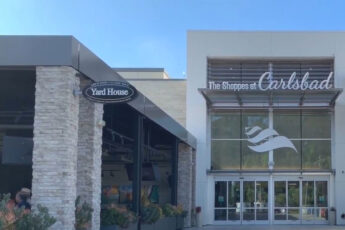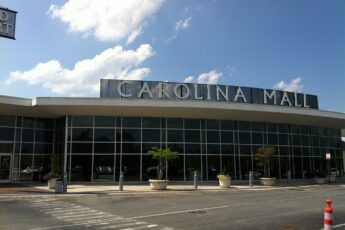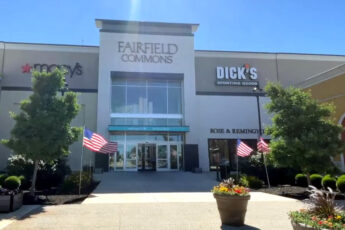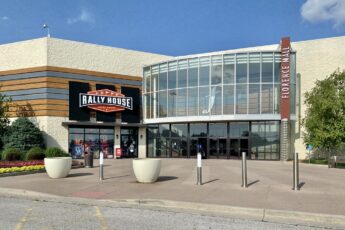Origins and Initial Development
Crestwood Plaza opened on March 21, 1957, in Crestwood, St. Louis, Missouri. Local retail developers Louis and Milton Zorensky spearheaded the project. They designed the mall as the first regional shopping center in the St. Louis area.
Crestwood Plaza introduced a novel concept by featuring more than one anchor store, a departure from traditional shopping centers of that time.
The mall's original anchor stores included "Scruggs, Vandervoort, and Barney," a prominent local department store, and "Sears, Roebuck and Co." These stores occupied large spaces within the mall, each spanning multiple floors.
Crestwood Plaza became one of the first malls in the region to use a split-level parking lot, which allowed shoppers direct access to different levels of the anchor stores.
Crestwood Plaza's development coincided with St. Louis's rapid suburban growth in the post-war era. The mall's opening provided a centralized shopping destination, attracting customers from across the region.
By integrating multiple anchor stores, Crestwood Plaza set a precedent for future shopping centers in the Midwest.
The mall's design and tenant mix reflected the commercial trends of the late 1950s. It featured a range of specialty retailers alongside its anchor stores, making it a comprehensive shopping hub.
Crestwood Plaza's early success underscored the potential of suburban retail centers, shaping the shopping landscape in the St. Louis metropolitan area.
Expansion and Growth
In 1967, Crestwood Plaza expanded its retail offerings by adding a third anchor store, Stix, Baer & Fuller. This addition further boosted the mall's appeal, drawing even more shoppers from the growing suburban communities around St. Louis.
The late 1960s and 1970s marked a period of growth for the mall. By the mid-1970s, Crestwood Plaza had firmly established itself as a retail hub in the region.
The mall's success led to further enhancements, such as its enclosure in 1984. This move followed the trend of enclosed shopping centers, offering a climate-controlled environment that made shopping more comfortable year-round.
During this period, Crestwood Plaza continued to attract well-known retail brands. Woolworth's, a staple in American shopping centers, operated a store in the mall until 1988.
After Woolworth's closure, the space was reconfigured to accommodate 18 smaller stores, which diversified the shopping experience and catered to a wider range of consumer needs.
Crestwood Plaza's ability to adapt and expand during these decades kept it relevant in a competitive retail landscape. The mall remained a go-to destination for shoppers in the St. Louis area, driven by its blend of anchor stores, specialty shops, and ongoing developments.
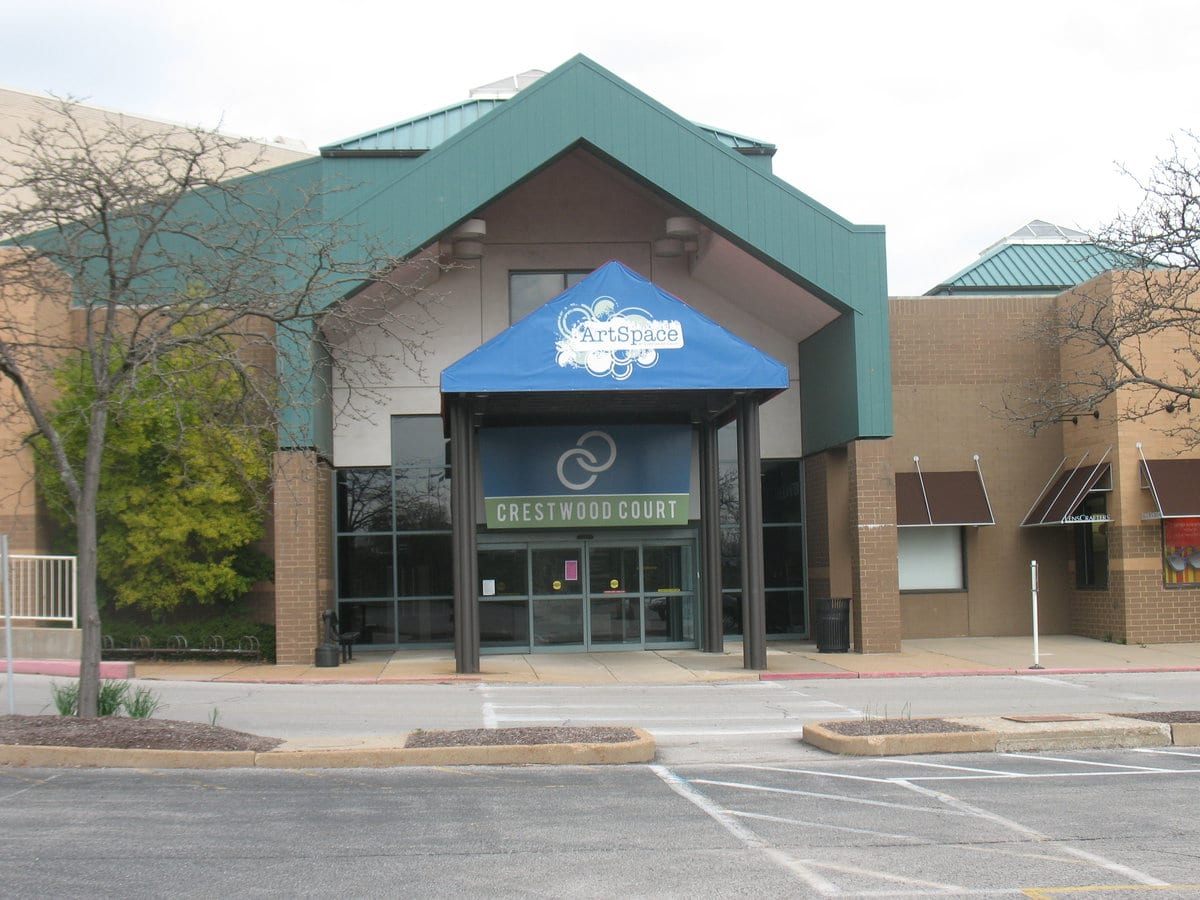
Changes in Ownership and Decline
In 1998, the Westfield Group acquired Crestwood Plaza, rebranding it as Westfield Shoppingtown Crestwood. This acquisition marked the beginning of a new chapter for the mall, though it soon faced challenges.
The early 2000s brought increased competition from newer shopping centers in the region, such as the St. Louis Galleria and West County Center, which led to a gradual decline in foot traffic and sales.
Dillard's, which had replaced Stix, Baer & Fuller in 1984, closed its doors in 2007. The departure of Dillard's, a major anchor, dealt a blow to the mall's vitality.
In 2008, Centrum Properties purchased the mall and renamed it Crestwood Court. They attempted to revitalize the space by introducing art galleries and studios, but these efforts failed to attract enough shoppers.
The decline continued as Macy's, which had taken over the Famous-Barr space, shuttered its location at Crestwood Court in 2009.
This left Sears as the only remaining anchor store, a clear indicator of the mall's downturn. By 2012, Sears, too, decided to close, leaving the mall nearly empty and signaling the end of its era as a thriving retail destination.
Crestwood Plaza's decline reflected broader trends in the retail industry, where older malls struggled to compete with newer, more modern shopping centers.
Crestwood Plaza officially closed on July 11, 2013. LensCrafters, the last remaining tenant with an exterior entrance, shut down in September 2013.
Final Demolition
UrbanStreet Group bought the property at an online auction in April 2014 for $3.6 million, a sharp contrast to the $17.5 million that Centrum Properties had paid in 2008.
UrbanStreet's initial proposal in April 2015 aimed to transform the area into a mixed-use development featuring retail, residential spaces, entertainment venues, and community gardens.
The end of Crestwood Plaza's retail life led to its inevitable demolition. In May 2016, demolition crews began tearing down the structure that had once housed so many memories for residents.
By October 2017, nothing had remained of the original mall, and the site had been cleared, awaiting a new chapter in its history.
However, progress stalled, and by 2018, the project faced delays. To prevent erosion, the developers planted prairie grass on the site, leaving the future of the land uncertain.
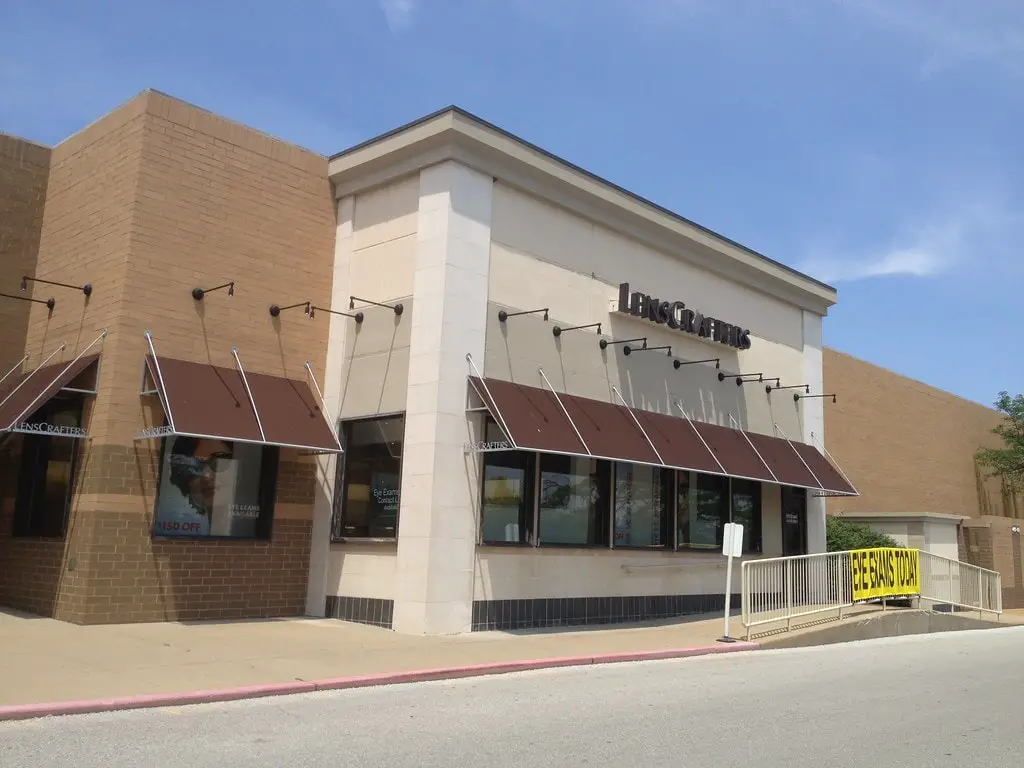
Crestwood Plaza's Latest Developments in 2023-2024
The redevelopment of the former Crestwood Plaza site has made notable progress in 2023 and 2024, yet it continues to face challenges.
After years of delays, Dierbergs Markets finally opened a new grocery store on the site in March 2023, marking the first completed phase of the project. This new store serves as a cornerstone for the mixed-use development that has long been planned for the area.
The mixed-use project, spearheaded by UrbanStreet Group and McBride Homes, aims to transform the former mall site into a vibrant community hub with retail, residential, and entertainment spaces.
However, despite the successful launch of the Dierbergs store, the overall redevelopment has not moved as quickly as anticipated. The residential construction, which includes plans for both single-family homes and multi-family units, is ongoing but behind schedule.
As of 2024, discussions continue regarding the inclusion of additional amenities, such as a movie theater and more dining options, which would further enhance the site's appeal.
The project's completion is now a top priority for both developers and local officials, who hope that once finished, the redevelopment will reinvigorate the Crestwood area and provide new opportunities for local businesses and residents.



